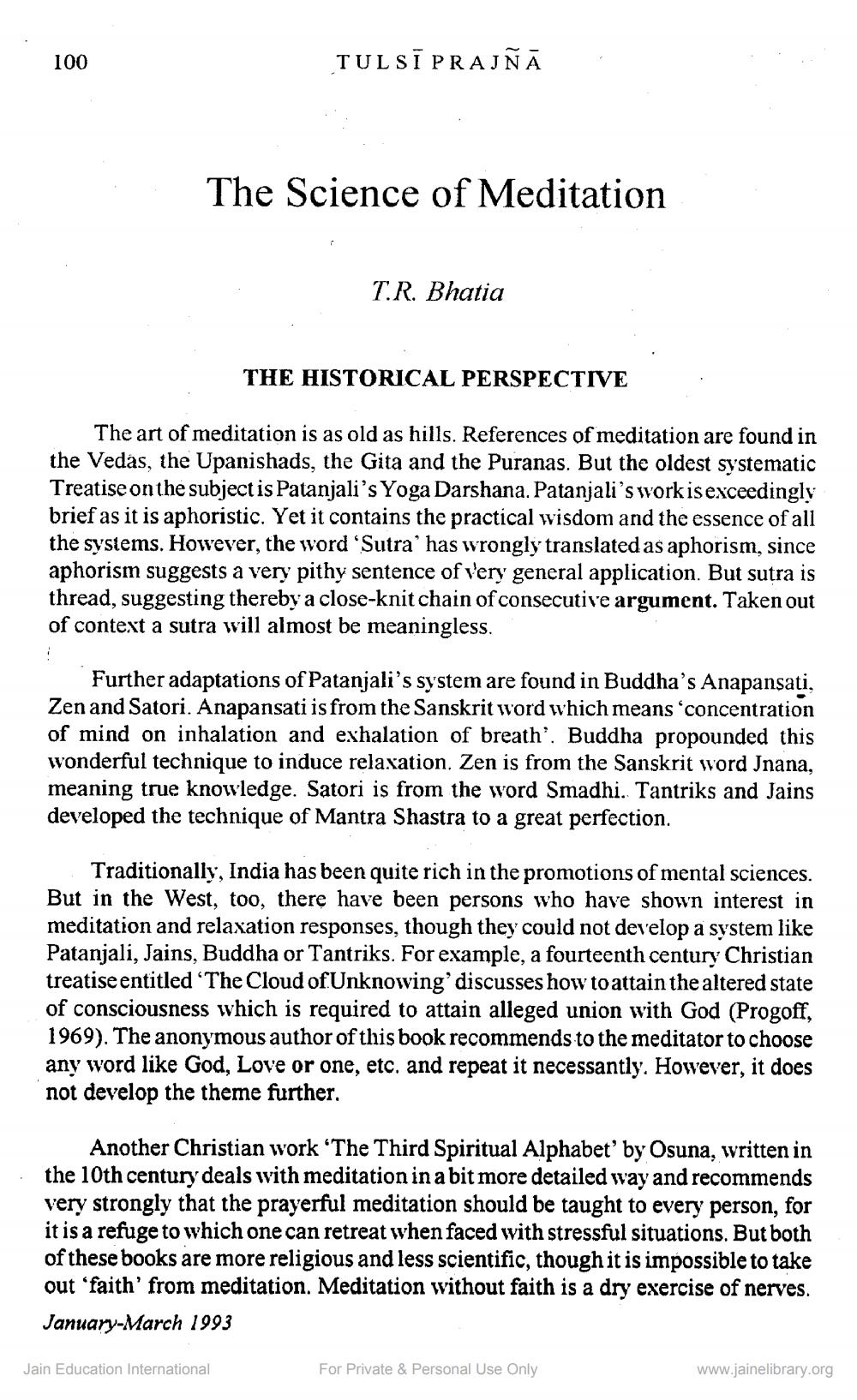________________
100
TULSI PRAJÑA
The Science of Meditation
T.R. Bhatia
THE HISTORICAL PERSPECTIVE
The art of meditation is as old as hills. References of meditation are found in the Vedas, the Upanishads, the Gita and the Puranas. But the oldest systematic Treatise on the subject is Patanjali's Yoga Darshana. Patanjali's work is exceedingly brief as it is aphoristic. Yet it contains the practical wisdom and the essence of all the systems. However, the word 'Sutra' has wrongly translated as aphorism, since aphorism suggests a very pithy sentence of very general application. But sutra is thread, suggesting thereby a close-knit chain of consecutive argument. Taken out of context a sutra will almost be meaningless.
Further adaptations of Patanjali's system are found in Buddha's Anapansati, Zen and Satori. Anapansati is from the Sanskrit word which means 'concentration of mind on inhalation and exhalation of breath?. Buddha propounded this wonderful technique to induce relaxation. Zen is from the Sanskrit word Jnana, meaning true knowledge. Satori is from the word Smadhi. Tantriks and Jains developed the technique of Mantra Shastra to a great perfection.
Traditionally, India has been quite rich in the promotions of mental sciences. But in the West, too, there have been persons who have shown interest in meditation and relaxation responses, though they could not develop a system like Patanjali, Jains, Buddha or Tantriks. For example, a fourteenth century Christian treatise entitled 'The Cloud of Unknowing' discusses how to attain the altered state of consciousness which is required to attain alleged union with God (Progoff, 1969). The anonymous author of this book recommends to the meditator to choose any word like God, Love or one, etc. and repeat it necessantly. However, it does not develop the theme further.
Another Christian work 'The Third Spiritual Alphabet' by Osuna, written in the 10th century deals with meditation in a bit more detailed way and recommends very strongly that the prayerful meditation should be taught to every person, for it is a refuge to which one can retreat when faced with stressful situations. But both of these books are more religious and less scientific, though it is impossible to take out ‘faith' from meditation. Meditation without faith is a dry exercise of nerves. January-March 1993
Jain Education International
For Private & Personal Use Only
www.jainelibrary.org




